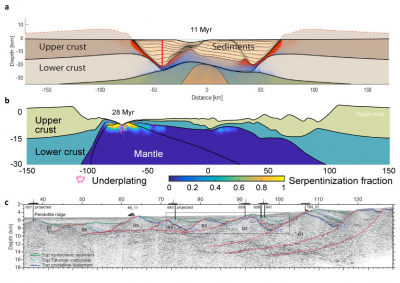Die Inhalte dieser Seite sind leider nicht auf Deutsch verfügbar.
Seitenpfad:
- Geophysics – Geodynamics
- Methods
Methods
We use observations of the crustal and lithospheric structure of margins from wide-angle and multichannel seismic data with numerical modeling of their dynamics. We actively pursue sea-going expeditions to collect seismic data, as well as develop in house numerical codes to understand these observations. Numerical models include fully dynamic codes and mixed kinematic-dynamic codes to simulate lithospheric extension, both using finite element approximations. We also develop inversions of topography and gravity data to gain an understanding of the lateral variations in the lithosphere’s strength.



